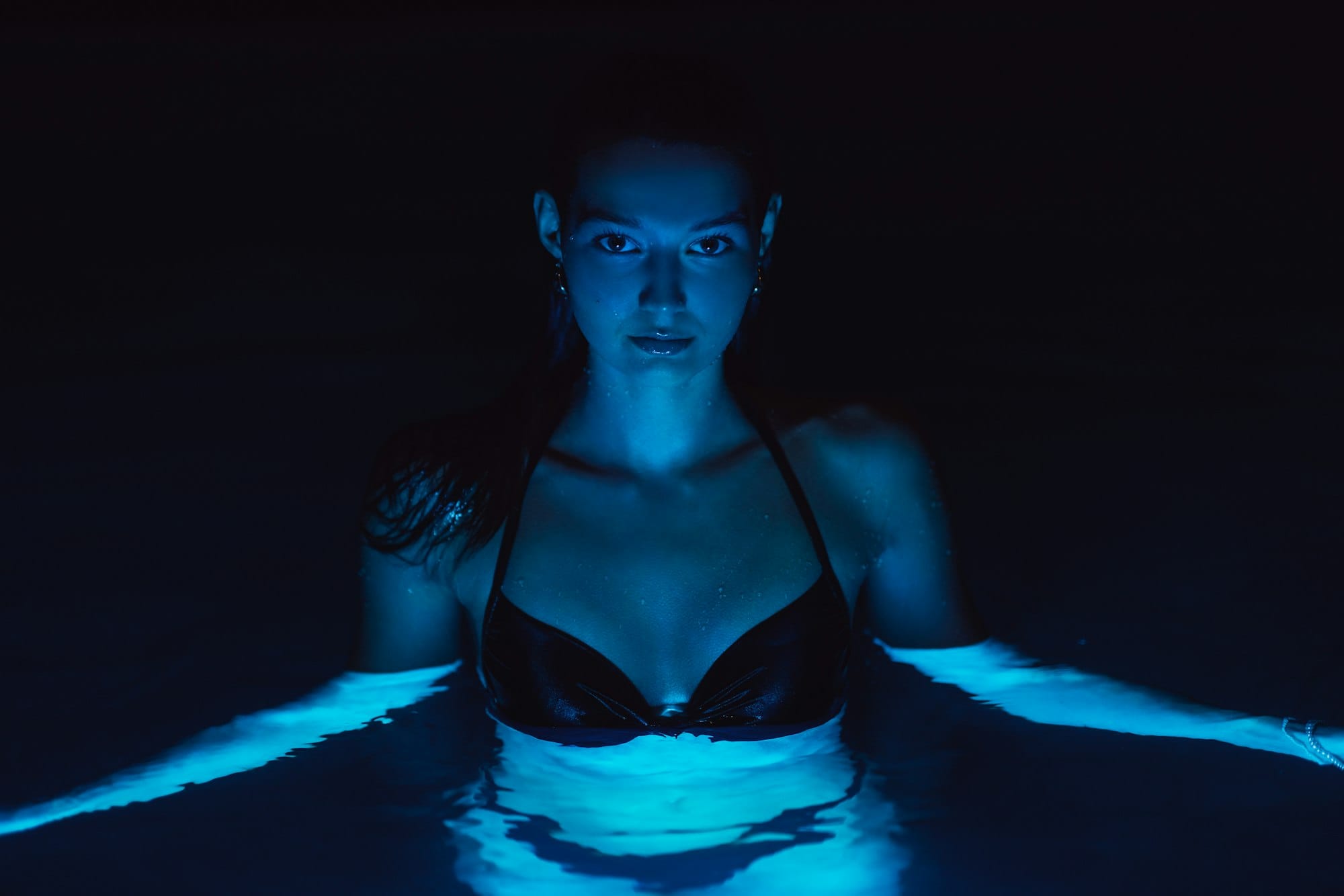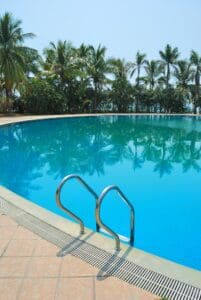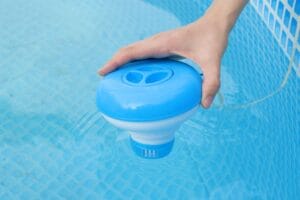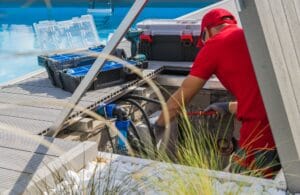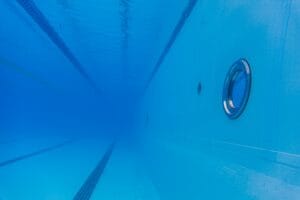How to Connect LED Pool Lights with DMX512 Controller and DALI, and Understanding the Differences Between DMX512 and DALI?
Controlling LED pool lights with modern lighting protocols can add immense functionality and customization to your pool lighting setup. Two of the most popular control protocols for LED lighting are DMX512 and DALI, each offering unique benefits and capabilities. If you’re considering connecting your LED pool lights to either a DMX512 or DALI controller, it’s essential to understand how they work and what distinguishes them.
In this post, we’ll cover:
1. How to connect LED pool lights with DMX512 and DALI controllers.
2. The differences between DMX512 and DALI, including which system might be best suited for your needs.
What Are DMX512 and DALI?
Before diving into the specifics of connecting your LED pool lights, let’s explore what DMX512 and DALI protocols are, as understanding their features will help you decide which is right for your setup.
DMX512 (Digital Multiplex)
• Overview: DMX512 is a communication protocol commonly used for stage lighting, theaters, and architectural lighting. It allows precise control over color, intensity, and lighting effects, making it highly popular for RGB lighting applications.
• Capabilities: DMX512 can control up to 512 channels per universe, giving users detailed control over multiple lights or lighting fixtures. It’s ideal for dynamic and complex lighting effects, such as color changes, fades, and synchronized patterns.
• Application: DMX512 is often used in entertainment environments or places that require programmable lighting with intricate effects.
DALI (Digital Addressable Lighting Interface)
• Overview: DALI is a standardized protocol primarily used for building lighting controls, providing precise control over individual lights or groups of lights. It is simpler and more focused on commercial applications.
• Capabilities: DALI can control up to 64 individual lights per network and is known for offering smooth dimming and brightness control. It is generally used in architectural and commercial lighting setups that focus more on efficiency than color effects.
• Application: DALI is commonly found in commercial spaces where efficiency, reliability, and ease of control are important, such as office buildings, hotels, and retail spaces.
How to Connect LED Pool Lights with a DMX512 Controller
DMX512 controllers are an excellent choice for pool owners looking to add advanced color and pattern controls to their LED pool lights. Here’s how to connect your lights to a DMX512 controller:
Step 1: Check for DMX Compatibility
• Ensure that your LED pool lights are DMX-compatible. Most RGB or RGBW LED lights will specify if they are designed to work with DMX512, as they’ll need a built-in DMX decoder or an external DMX driver.
Step 2: Set Up a DMX Decoder
• If your LED pool lights are not directly DMX512-compatible, you’ll need a DMX decoder. The decoder translates DMX signals from the controller into a format that the lights can interpret. Many pool lighting systems have dedicated DMX decoders designed to be water-resistant for outdoor use.
Step 3: Connect the DMX Controller to the Decoder
• Use a DMX cable (usually a 3-pin or 5-pin XLR cable) to connect the DMX512 controller to the DMX decoder. If your controller and decoder are part of a larger DMX network, make sure all devices are connected in a “daisy chain” configuration. Connect the controller to the first decoder, then continue linking additional decoders if necessary.
Step 4: Addressing the Lights
• DMX devices require individual addresses to function correctly. Each LED light or lighting group should have a unique DMX address, allowing the controller to identify and manage them separately. This process may vary slightly depending on your controller model.
Step 5: Configure and Control the Lights
• Use the DMX controller interface to program colors, brightness, and effects. Many DMX controllers have software that allows you to customize lighting scenes, sequences, and schedules, which is perfect for creating dynamic lighting effects around your pool area.
Additional Tips for DMX Setup
• DMX Terminator: If your setup involves long cable runs, add a DMX terminator at the end of the daisy chain to prevent signal issues.
• Waterproof Housing: Ensure that any exposed connections are weatherproof, as outdoor setups are vulnerable to moisture and water exposure.
How to Connect LED Pool Lights with a DALI Controller
Connecting your LED pool lights to a DALI controller is generally simpler than DMX512, as DALI focuses on individual control and dimming without complex effects.
Step 1: Verify DALI Compatibility
• Make sure your LED pool lights are DALI-compatible. DALI-compatible lights or drivers should be marked as such. If your lights do not directly support DALI, you can use a DALI driver or converter.
Step 2: Connect the DALI Controller
• DALI uses a two-wire communication system, so you’ll need to connect your DALI controller to the DALI bus (the two wires that carry the DALI signal). This connection allows the controller to communicate with each DALI-enabled light individually.
Step 3: Addressing and Grouping
• DALI allows you to assign an address to each light individually, as well as group lights into zones. This feature is useful for controlling different areas of your pool separately, such as setting brighter lighting around the steps and softer lighting in other areas.
Step 4: Configure Dimming and Brightness Levels
• Once your DALI network is set up, you can use the controller to adjust dimming and brightness. DALI is known for its smooth dimming capabilities, making it ideal for creating a relaxing atmosphere around your pool.
Step 5: Control and Automation
• Many DALI systems allow you to set up automated schedules or scenes, where lights adjust automatically based on the time of day. You can also integrate DALI with building management systems for more extensive automation, although this may be less relevant for residential pool lighting.
DMX512 vs. DALI: Which One Is Right for Your Pool?
Both DMX512 and DALI have their strengths, so the right choice depends on your specific lighting needs and preferences.
When to Choose DMX512
• Advanced Color and Effects: If you want to create dynamic lighting effects, such as color-changing patterns, synchronized sequences, or strobe effects, DMX512 is the ideal choice.
• Entertainment-Focused: DMX is great for pools frequently used for parties or gatherings, as it provides a high level of control over color and movement, which can enhance the atmosphere.
When to Choose DALI
• Smooth Dimming and Simplicity: If your goal is more focused on adjusting brightness levels or creating a relaxing ambiance, DALI is an excellent option.
• Efficiency and Individual Control: DALI is perfect for pool owners who prioritize easy control, efficiency, and reliability without the need for intricate color effects.
Summary of Differences
• Control Capabilities: DMX512 excels in color control and special effects, while DALI is better for dimming and individual light control.
• Applications: DMX512 is often used for entertainment settings, while DALI is suited for commercial and residential environments where smooth lighting transitions are desired.
• Complexity: DMX512 systems can be complex to install and configure, whereas DALI is typically simpler and more straightforward.
Conclusion
Connecting your LED pool lights to a DMX512 or DALI controller can significantly enhance your control over your pool’s lighting setup. DMX512 is ideal for creating dynamic and colorful lighting displays, making it perfect for entertainment. On the other hand, DALI offers efficient, easy-to-manage control with smooth dimming, providing a more straightforward setup.
Ultimately, the choice between DMX512 and DALI depends on your lighting goals and preferences. Both systems offer substantial benefits, so pick the one that aligns best with your vision for a beautifully lit and functional pool area.
How to Connect LED Pool Lights with DMX512 Controller and DALI, and Understanding the Differences Between DMX512 and DALI
Controlling LED pool lights with modern lighting protocols can add immense functionality and customization to your pool lighting setup. Two of the most popular control protocols for LED lighting are DMX512 and DALI, each offering unique benefits and capabilities. If you’re considering connecting your LED pool lights to either a DMX512 or DALI controller, it’s essential to understand how they work and what distinguishes them.
In this post, we’ll cover:
1. How to connect LED pool lights with DMX512 and DALI controllers.
2. The differences between DMX512 and DALI, including which system might be best suited for your needs.
What Are DMX512 and DALI?
Before diving into the specifics of connecting your LED pool lights, let’s explore what DMX512 and DALI protocols are, as understanding their features will help you decide which is right for your setup.
DMX512 (Digital Multiplex)
• Overview: DMX512 is a communication protocol commonly used for stage lighting, theaters, and architectural lighting. It allows precise control over color, intensity, and lighting effects, making it highly popular for RGB lighting applications.
• Capabilities: DMX512 can control up to 512 channels per universe, giving users detailed control over multiple lights or lighting fixtures. It’s ideal for dynamic and complex lighting effects, such as color changes, fades, and synchronized patterns.
• Application: DMX512 is often used in entertainment environments or places that require programmable lighting with intricate effects.
DALI (Digital Addressable Lighting Interface)
• Overview: DALI is a standardized protocol primarily used for building lighting controls, providing precise control over individual lights or groups of lights. It is simpler and more focused on commercial applications.
• Capabilities: DALI can control up to 64 individual lights per network and is known for offering smooth dimming and brightness control. It is generally used in architectural and commercial lighting setups that focus more on efficiency than color effects.
• Application: DALI is commonly found in commercial spaces where efficiency, reliability, and ease of control are important, such as office buildings, hotels, and retail spaces.
How to Connect LED Pool Lights with a DMX512 Controller
DMX512 controllers are an excellent choice for pool owners looking to add advanced color and pattern controls to their LED pool lights. Here’s how to connect your lights to a DMX512 controller:
Step 1: Check for DMX Compatibility
• Ensure that your LED pool lights are DMX-compatible. Most RGB or RGBW LED lights will specify if they are designed to work with DMX512, as they’ll need a built-in DMX decoder or an external DMX driver.
Step 2: Set Up a DMX Decoder
• If your LED pool lights are not directly DMX512-compatible, you’ll need a DMX decoder. The decoder translates DMX signals from the controller into a format that the lights can interpret. Many pool lighting systems have dedicated DMX decoders designed to be water-resistant for outdoor use.
Step 3: Connect the DMX Controller to the Decoder
• Use a DMX cable (usually a 3-pin or 5-pin XLR cable) to connect the DMX512 controller to the DMX decoder. If your controller and decoder are part of a larger DMX network, make sure all devices are connected in a “daisy chain” configuration. Connect the controller to the first decoder, then continue linking additional decoders if necessary.
Step 4: Addressing the Lights
• DMX devices require individual addresses to function correctly. Each LED light or lighting group should have a unique DMX address, allowing the controller to identify and manage them separately. This process may vary slightly depending on your controller model.
Step 5: Configure and Control the Lights
• Use the DMX controller interface to program colors, brightness, and effects. Many DMX controllers have software that allows you to customize lighting scenes, sequences, and schedules, which is perfect for creating dynamic lighting effects around your pool area.
Additional Tips for DMX Setup
• DMX Terminator: If your setup involves long cable runs, add a DMX terminator at the end of the daisy chain to prevent signal issues.
• Waterproof Housing: Ensure that any exposed connections are weatherproof, as outdoor setups are vulnerable to moisture and water exposure.
How to Connect LED Pool Lights with a DALI Controller
Connecting your LED pool lights to a DALI controller is generally simpler than DMX512, as DALI focuses on individual control and dimming without complex effects.
Step 1: Verify DALI Compatibility
• Make sure your LED pool lights are DALI-compatible. DALI-compatible lights or drivers should be marked as such. If your lights do not directly support DALI, you can use a DALI driver or converter.
Step 2: Connect the DALI Controller
• DALI uses a two-wire communication system, so you’ll need to connect your DALI controller to the DALI bus (the two wires that carry the DALI signal). This connection allows the controller to communicate with each DALI-enabled light individually.
Step 3: Addressing and Grouping
• DALI allows you to assign an address to each light individually, as well as group lights into zones. This feature is useful for controlling different areas of your pool separately, such as setting brighter lighting around the steps and softer lighting in other areas.
Step 4: Configure Dimming and Brightness Levels
• Once your DALI network is set up, you can use the controller to adjust dimming and brightness. DALI is known for its smooth dimming capabilities, making it ideal for creating a relaxing atmosphere around your pool.
Step 5: Control and Automation
• Many DALI systems allow you to set up automated schedules or scenes, where lights adjust automatically based on the time of day. You can also integrate DALI with building management systems for more extensive automation, although this may be less relevant for residential pool lighting.
DMX512 vs. DALI: Which One Is Right for Your Pool?
Both DMX512 and DALI have their strengths, so the right choice depends on your specific lighting needs and preferences.
When to Choose DMX512
• Advanced Color and Effects: If you want to create dynamic lighting effects, such as color-changing patterns, synchronized sequences, or strobe effects, DMX512 is the ideal choice.
• Entertainment-Focused: DMX is great for pools frequently used for parties or gatherings, as it provides a high level of control over color and movement, which can enhance the atmosphere.
When to Choose DALI
• Smooth Dimming and Simplicity: If your goal is more focused on adjusting brightness levels or creating a relaxing ambiance, DALI is an excellent option.
• Efficiency and Individual Control: DALI is perfect for pool owners who prioritize easy control, efficiency, and reliability without the need for intricate color effects.
Summary of Differences
• Control Capabilities: DMX512 excels in color control and special effects, while DALI is better for dimming and individual light control.
• Applications: DMX512 is often used for entertainment settings, while DALI is suited for commercial and residential environments where smooth lighting transitions are desired.
• Complexity: DMX512 systems can be complex to install and configure, whereas DALI is typically simpler and more straightforward.
Conclusion
Connecting your LED pool lights to a DMX512 or DALI controller can significantly enhance your control over your pool’s lighting setup. DMX512 is ideal for creating dynamic and colorful lighting displays, making it perfect for entertainment. On the other hand, DALI offers efficient, easy-to-manage control with smooth dimming, providing a more straightforward setup.
Ultimately, the choice between DMX512 and DALI depends on your lighting goals and preferences. Both systems offer substantial benefits, so pick the one that aligns best with your vision for a beautifully lit and functional pool area.

